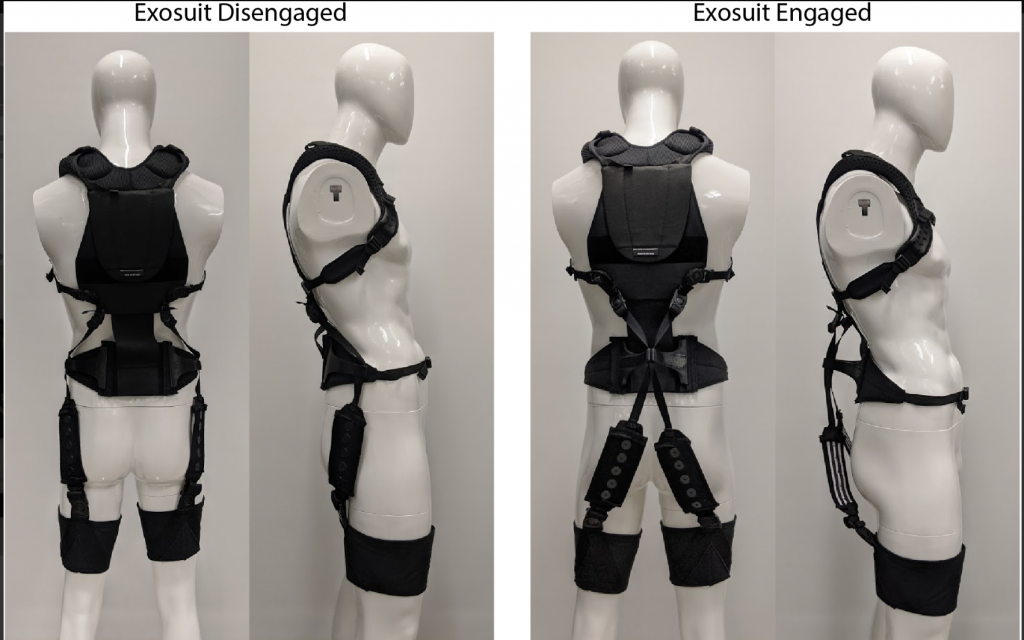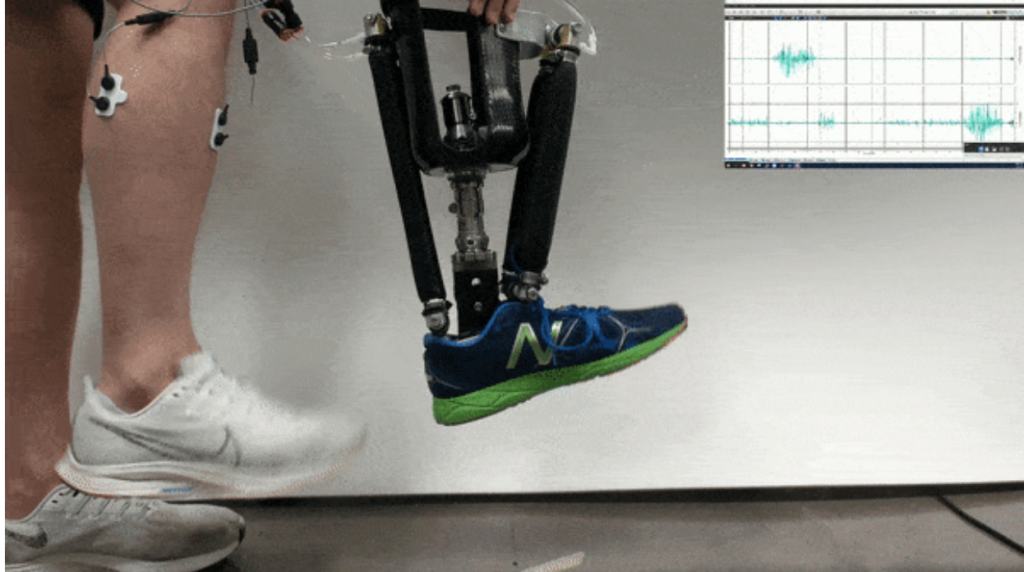
Photos of the extensible exosuit prototype in disengaged mode (two photos on the left), and in engaged mode (two photos on the right).
Exoskeleton Technology Requires Physical Training to Activate Neural Control
Perhaps most of us who have never had to deal with a prothesis really gave much thought to how difficult designing and producing an electronically signaled limb could be. After reading an article from spectrum.ieee.org and a paper from North Carolina State University research team, it’s clear that tremendous effort goes into this miracle assistant for disabled people.
Rehab therapy is a central part of engaging the technology and making the prosthetics work.
Apart from the actual electronic signal that the prothesis sends to manipulate the limb, it must be compatible with the electronic signal that the muscle of the patient also sends to the prosthesis. And it turns out what is really needed is practice, practice, and more practice.
“Autonomous control works really well for walking, but when it comes to more than just walking, such as playing tennis or freestyle dancing, it’d be good to have neural control,” says study senior author Helen Huang, a biomedical engineer at North Carolina State University.
One question when it comes to neural control over robotic prosthetics is how well the nervous systems of patients can still activate the muscles that amputees still have left in a limb.
“During surgery, the original structures of muscles are changed,” Huang says. “We’ve found that people can activate these residual muscles, but the way they contract them is different from that of an able-bodied person, so they need training on how to use these muscles.”

Practicing with the exoskeleton
A 57-year-old volunteer was used in the above study. Having lost his leg between the knee and ankle the patient was having a hard time with simple movements. Movements we all take for granted but are extremely hard to replicate with his lower body exoskeleton.
After training, for about two and a half weeks, the volunteer could perform a variety of tasks he found difficult before. These included going from sitting to standing without any external assistance or squatting to pick up something off the ground without compensating for the motion with other body parts.
The researchers now aim to examine more patients with robotic prosthetics and test them with more tasks, such as avoiding obstacles. They also want to investigate what the nervous systems of these volunteers might be doing during such training. “Are they restoring their original neural pathways?” Huang asks.
The scientists detailed their findings in a paper published this month in the journal Wearable Technologies.
read more at spectrum.ieee.org







Leave A Comment